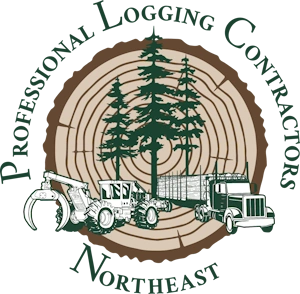ME Timber Harvesting Down 15% (Only 4% Clearcuts)
Maine Forest Service releases annual reports on timber harvesting, stumpage prices
AUGUSTA – The Maine Forest Service has published its 2009 Silvicultural Activities and Stumpage Price reports.
The Silvicultural Activities Report documents the type and amount of timber-harvesting activities that occurred in Maine during 2009. It summarizes the number of acres that were cut under different harvesting methods, including partial harvesting, shelterwood harvesting (harvesting so selected trees can provide seeds for regeneration and shelter for seedlings), clearcutting, and harvesting for land-use conversion.
The Stumpage Price Report contains information about the prices Maine woodland owners received for trees they had cut on their property during 2009. The information is summarized by county, type of forest products, and tree species.
“These reports help us provide the public with information about what is occurring in Maine’s forests” Donald Mansius, director of the Maine Forest Service’s Forest Policy and Management Division, said. “They are useful to land owners, land managers, policy makers or anyone with an interest in Maine’s forests.
Harvesting activities in Maine during 2009 were much lower than previous years and reflect the economic conditions, according to MFS officials. The total number of acres harvested in 2009 — 394,100 acres — was down 15 percent from the 2008 total of 463,200 acres. Acres clearcut increased from 10,075 acres in 2008 to 14,866 acres in 2009. Clearcutting, which is used as a management tool used to regenerate the forest, still amounts to less than 4 percent of the total harvested acres.
Landowner investment in pre-commercial activities designed to increase forest productivity declined 20 percent from 22,035 acres in 2008 to 17,562 acres in 2009. These activities include thinning smaller trees, use of herbicides for site preparation, competition control, and tree planting.
Stumpage prices paid to landowners demonstrated a downward trend, MFS officials said.
“Given the economic situation, it’s not surprising that stumpage prices overall were lower in 2009 than previous years,” Mansius observed. “Many factors, though, influence the prices that landowners can expect to receive for a timber harvest.”
“Maine’s forests contribute several billion dollars to Maine’s economy,” Alec Giffen, MFS director said. “Like other sectors of Maine’s economy, the forestry sector also has seen a downturn. However, we are seeing some encouraging signs that the situation might be turning around.”
Since timber markets are always changing, a landowner’s best source for current pricing information is a consulting forester or their local Maine Forest Service district forester.
“A district forester will walk the land with the landowner, discuss management goals and refer the landowner to a consultant,” Mansius pointed out. “The service is free from the Maine Forest Service.”
The Maine Forest Service strongly recommends any landowner considering having trees cut on their property to engage the services of a consulting forester and to have a written contract with their harvester. This insures that everyone involved with the harvest knows what is expected, including prices for their trees.
“When we hear from landowners who have had problems with harvests on their land, we ask them if they used a consulting forester and had a contract,” Giffen said. “Unfortunately, many of these landowners did neither, and it is difficult for them to take corrective measures!
“The Maine Forest Service is here to help landowners with any questions or concerns they may have about their trees,” Giffen said.
Both reports are available on line at: http://www.maine.gov/doc/mfs/index.shtml
For more information, call the Maine Forest Service toll free at: 1-800-367-0223
Or email: forestinfo@maine.gov
Source: Maine Forest Service
